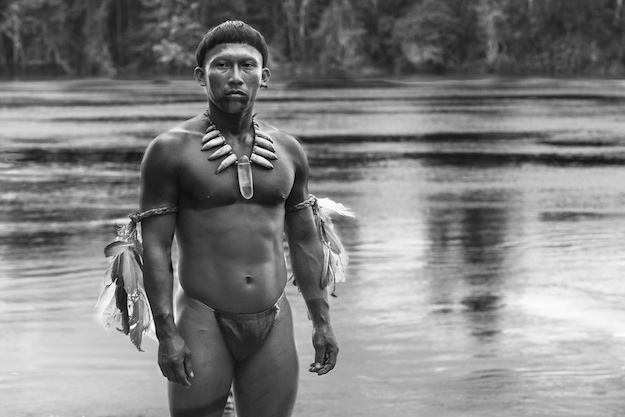Anthropology and film have cohabited since the early days of cinema. The blending of artful narrative with scientifically grounded ethnography was pioneered as a genre – dubbed “ethnofiction” – by Jean Rouch, one of the foremost documentary filmmakers of the 20th century. Rouch’s films focused on social life and rituals in Niger and Mali and, though interwoven with scripted fictions, provoked profound philosophical and political debate on the nature of identity and indigenous life.
This dynamic is on display in two recent Latin American films. To Have Done with the Judgment of God (2016), by Venezuelan artist Javier Téllez, and Embrace of the Serpent (2015), by Colombian filmmaker Ciro Guerra, are alike in offering portraits of spectacular landscapes and intriguing cultures. But they also serve as compelling sociological studies that illustrate – with different aims and, ultimately, to varying degrees of success – how the lives of indigenous peoples are informed by, and reflective of, a process of colonialism.
To Have Done with the Judgment of God, on display this year at the Site Santa Fe Biennial, focuses on French writer and poet Antonin Artaud’s visit to the Rarámuri community in northwest Mexico in 1936. The Rarámuri (or Tarahumaras) believed that communication with their gods was predicated on the ceremonial use of the psychedelic peyote cactus – which very much interested Artaud given his taste for hallucinogens. Artaud recorded a radio program on Radiodiffusion Française that, due to depictions of the community deemed by authorities as too obscene for public consumption, was ultimately never broadcast.
In 2015, Téllez had the program, originally in French, translated into the Rarámuri language and replayed for the inhabitants of the region. His 37-minute work, which borrows the title of Artaud’s original project, focuses on their reaction.
Embrace of the Serpent, also deals with indigenous identity and anthropology. But where Téllez’s film hinges on a specific historical event, Guerra’s feature film is a fictional recreation of the encounters of two different Western explorers with indigenous tribes in the Colombian Amazon basin.
The screenplay, written by Guerra and Jacques Toulemonde, draws on the journals of German ethnobotanist Theodor Koch-Grünberg (who visited Colombia in 1909) and U.S. botanist Richard Evans Schultes (who visited in 1940). Both men were engaged in a search for the sacred yakruna plant, considered to have healing properties by the people of the Amazonian rainforest. The film, which intertwines the experiences of both men, depicts the daily lives of the indigenous peoples over the span of the three decades, chronicling the impact of outsiders on their customs and beliefs.
Even though each film depicts starkly different cultures and experiences, and were made for different audiences and places for display (Tellez’s in an art gallery and Guerra’s in theaters), they have much in common; the literal role of an interpreter as a means to bridge the gulf between Western visitors and indigenous communities is perhaps the most striking. Artaud employed a “mestizo” interpreter during his trip to the Rarámuri, a man who serves as a filter throughout his recording of the event. In Embrace of the Serpent, Guerra employs a fictional warrior-shaman named Karamakate to serve as a guide on his botanists’ adventures.
But while it is clear that Embrace of the Serpent is a work of historical fiction, in Téllez’s movie it is sometimes hard to distinguish spontaneous, non-scripted scenes from those specifically performed for the camera.
To that effect, Téllez’s project is in some ways more ambitious. Having translated the original French-language program into Rarámuri, he seems intent on reversing a colonialist power asymmetry by offering the broadcast as a gift to the local people. But one also has to wonder whether he has taken undue advantage of his position of control as “the white man behind the camera.” In this respect, the contrast to Karamakate’s role is especially important. In Embrace of the Serpent, we see the tales of the two explorers through the eyes – and not just the translation – of an indigenous person.
But in the final analysis, as the late French sociologist Marcel Mauss suggested, nothing comes for free: all gifts turn on the expectation of a calculated return. Téllez and Guerra seem more interested in telling the convoluted personal history of western men than in helping his audience empathize with the indigenous rituals and values.
—
Benedetti is a co-founder of Docomomo Venezuela (2010). She holds an MA in Art History from Hunter College.




